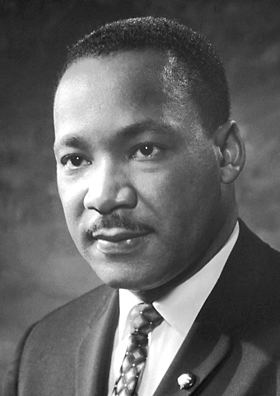 | ||
Stands for Extraversion (E), Intuition (N), Feeling (F), Judgment (J) Career matches Teacher, Writer, Artist, Actor, Scientist, Consultant Famous people Ben Affleck, Johnny Depp, Martin Luther King Jr, Matthew McConaughey, Lauren Graham | ||
Enfj personality type secret personalityhacker com
ENFJ (extraversion, intuition, feeling, judgement) is an abbreviation used in the publications of the Myers-Briggs Type Indicator (MBTI) to refer to one of 16 personality types. The MBTI assessment was developed from the work of prominent psychiatrist Carl G. Jung in his book Psychological Types. Jung proposed a psychological typology based on the theories of cognitive functions that he developed through his clinical observations.
Contents
- Enfj personality type secret personalityhacker com
- The enfj personality type
- The MBTI instrument
- Type description
- Correlation with Enneatype
- Cognitive functions
- Dominant Extraverted feeling Fe
- Auxiliary Introverted intuition Ni
- Tertiary Extraverted sensing Se
- Inferior Introverted thinking Ti
- Shadow functions
- References
From Jung's work, others developed psychological typologies. Jungian personality assessments include the MBTI assessment, developed by Isabel Briggs Myers and Katharine Cook Briggs, and the Keirsey Temperament Sorter, developed by David Keirsey. Keirsey referred to ENFJs as Teachers, one of the four types belonging to the temperament he called the Idealists. ENFJs account for about 2–5% of the population.
The enfj personality type
The MBTI instrument
The MBTI preferences indicate the differences in people based on the following:
By using their preference in each of these areas, people develop what Jung and Myers called psychological type. This underlying personality pattern results from the dynamic interaction of their four preferences, in conjunction with environmental influences and their own individual tendencies. People are likely to develop behaviors, skills, and attitudes based on their particular type. Each personality type has its own potential strengths as well as areas that offer opportunities for growth.
The MBTI tool consists of multiple choice questions that sort respondents on the basis of the four "dichotomies" (pairs of psychological opposites). Sixteen different outcomes are possible, each identified by its own four-letter code, referred to by initial letters. (N is used for iNtuition, since I is used for Introversion). The MBTI is approximately 75% accurate according to its own manual.
Type description
Extroverted feeling types seek continuity through harmonious relationships and collective values. They excel at picking up on values, simply because shared values are what create harmony. Some will profess the importance of tough-minded logic, justice and scholarly debate because their environments have these shared values. They tend to adopt the collective values of those in their social group.
Correlation with Enneatype
According to Baron and Wagele, the most common Enneatypes for ENFJs are Helpers (Twos) and Achievers (Threes).
Cognitive functions
Drawing upon Jungian theory, Isabel Myers proposed that for each personality type, the cognitive functions (sensing, intuition, thinking, and feeling) form a hierarchy. This hierarchy represents the person's default pattern of behavior.
The Dominant function is the personality type's preferred role, the one they feel most comfortable with. The secondary Auxiliary function serves to support and expand on the Dominant function. If the Dominant is an information gathering function (sensing or intuition), the Auxiliary is a decision making function (thinking or feeling), and vice versa. The Tertiary function is less developed than the Dominant and Auxiliary, but it matures over time, rounding out the person's abilities. The Inferior function is the personality type's fatal weakness. This is the function they are least comfortable with. Like the Tertiary, the Inferior function strengthens with maturity.
Jung and Myers considered the attitude of the Auxiliary, Tertiary, and Inferior functions to be the opposite of the Dominant. In this interpretation, if the Dominant function is extraverted, then the other three are introverted, and vice versa. However, many modern practitioners hold that the attitude of the Tertiary function is the same as the Dominant. Using the more modern interpretation, the cognitive functions of the ENFJ are as follows:
Dominant: Extraverted feeling (Fe)
Fe seeks social connections and creates harmonious interactions through considerate, enthusiastic, and charming behavior. Fe responds to the explicit (and implicit) wants of others, and may even create an internal conflict between the subject’s own needs and the desire to meet the needs of others.
Auxiliary: Introverted intuition (Ni)
Attracted to symbolic actions or devices, Ni synthesizes seeming paradoxes to create the previously unimagined. These realizations come with a certainty that demands action to fulfill a new vision of the future, solutions that may include complex systems or universal truths.
Tertiary: Extraverted sensing (Se)
Se focuses on the experiences and sensations of the immediate, physical world. With an acute awareness of the present surroundings, it brings relevant facts and details to the forefront and may lead to spontaneous action.
Inferior: Introverted thinking (Ti)
Ti seeks precision, such as the exact word to express an idea. It notices the minute distinctions that define the essence of things, then analyzes and classifies them. Ti examines all sides of an issue, looking to solve problems while minimizing effort and risk. It uses models to root out logical inconsistency.
Shadow functions
Later personality researchers (notably Linda V. Berens) added four additional functions to the descending hierarchy, the so-called "shadow" functions to which the individual is not naturally inclined but which can emerge when the person is under stress. For ENFJ these shadow functions are (in order):
